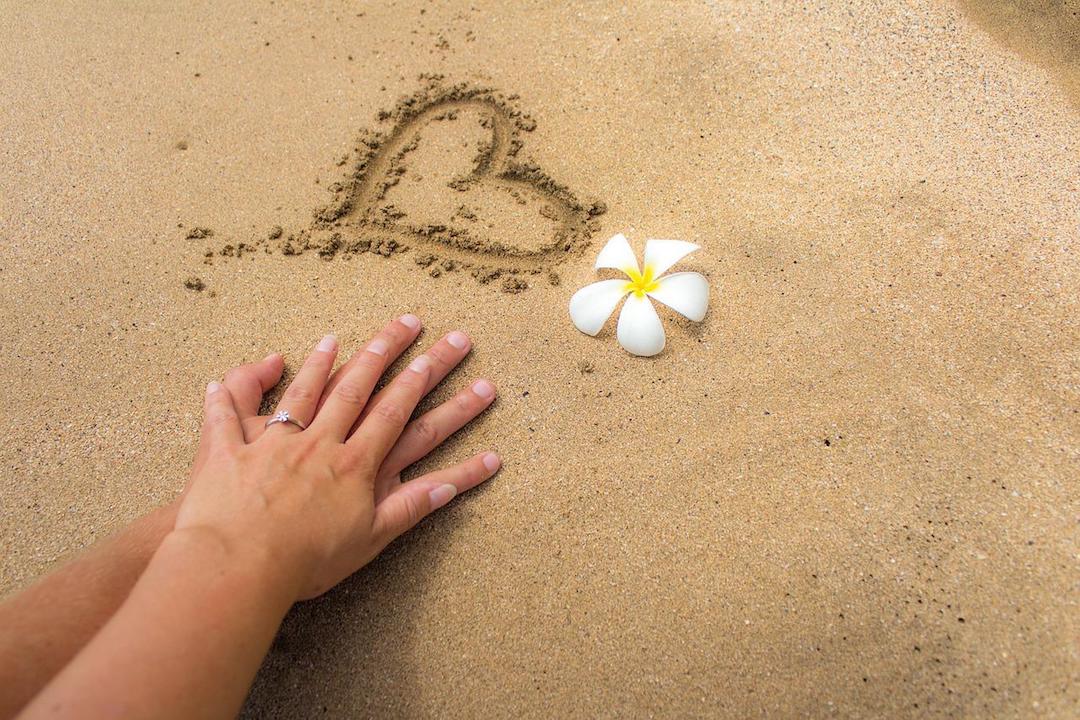Ho'oponopono and the Power of Forgiveness: What is it? How Does it Work?
Ho'oponopono is an ancient Hawaiian practice of healing and forgiveness that has already helped many people. But what is it, and how does it work?

Hooponopono - The Traditional Hawaiian Technique of Forgiveness!
The use of Ho'oponopono can assist in reestablishing harmony within oneself and with others.
A great way to introduce the amazing Hawaiian practice of forgiveness is through the legendary story of a spiritual practitioner and Hawaiian psychiatrist, Haleakala Hew Len Ph.D. Ho'oponopono is essentially based on healing through loving oneself. Dr.Len successfully used Ho'oponopono in the criminally insane ward of a Hawai'i State Hospital.
In common with other shamanic traditions, the Hawaiian tradition teaches that all life is connected. Ho’oponopono is, therefore, not only a way of healing ourselves but others and our world as well. –Timothy Freke, Shamanic Wisdomkeepers
Ho'oponopono:
• I am sorry
• I love you
• Thank you so much
• Please forgive me
What exactly is the Hawaiian practice of Ho'oponopono?
On the base level, many individuals have considered Ho'oponopono to be a chant in which one repeats the following phrases: "I am sorry, please forgive me, thank you, I love you." This is done as a sort of brain and spiritual purification that may be related to Buddhist procedures for cleansing karma. However, this is only one level of understanding of Ho'oponopono. As per the Hawaiian worldview, the source of difficulties and illness in the material world may be traced back to "errors of the mind." Therefore, they have been characterized as a practice of forgiving and reconciling. The phrase "to put right" comes from the Latin verb "rectificare." Its meaning is "to put in order or form, fix, revise, regulate, modify, manage, organize, mend, clean up, make orderly or tidy."

It is the core chant of the Ho'oponopono practice. (repeat it over and over again)
• I am sorry
• I love you
• Thank you so much
• Please forgive me
At first sight, I had trouble remembering the ordering of the phrases or even determining if there had been a particular sequence for them at all. Consequently, I tested them in every imaginable arrangement and repeated them on their own. Eventually, I was able to memorize the sequence of the words. I repeated them repeatedly to learn whether or not they were beneficial in some manner and, if they were, what it was about these terms that made them helpful.
When I did this, I noticed that many questions came up, and the questions that were asked varied depending on the sequence in which I stated the phrases. For example, "Why on earth should I feel guilty? What exactly do I have to apologize for? Why do I require forgiveness, both in this instant and throughout my whole life? Where can I even begin? What must I be thankful for? Is the phrase "I love you" something that I truly feel when I say it? If not, what is standing in our way?". I practiced working with these phrases in two different ways: first, I used them to address something that I was finding difficult specifically, and second, I merely chanted them without any particular goal in mind.
I discovered that my internal discordance, also known as my "stuff," would emerge to the surface by just reciting these phrases.
It seemed as if the frequency of these words was being adjusted to the discord that was already there in my inner world. Over time, I discovered that these four essential ideas functioned like tuning forks. Each conveys a unique tone of cleanliness that I could have used to adjust the discordant aspects of myself.
The best part is that I discovered that adopting this mantra to the turbulence in my head brought about peace and calmness in that space.

The strength to forgive seems to have the ability to restore peace not only within oneself but also with others.
The only problem with human beings is that they are arrogant, because that’s what thinking is. This is in essence ‘I know’. Wisdom is being in the void. To be thoughtless. Only by being in the void can the Light come through. As long as I have something going on in my mind the Light can’t come through. The Light can only come in when the mind is cleared–in a state of silence. – Dr Hew Len, Shamanic Wisdomkeepers
Why is Ho'oponopono such a powerful practice?
Physical distance, linguistic barriers, differences in cultural and religious views, and social and economic inequality throughout human history have separated humans. As a result, whenever one person presents a viewpoint, another person has the extremely opposite point of view.
The expressions "thank you," "I am sorry," "please forgive me," and "I love you" are universally recognized as having high value and significance by people of virtually every cultural background. If that is even an idea as a collective mind (as Jung and many eastern cultures have speculated), then the power of Ho'oponopono may arrive from the sheer number of people all across the history of humanity who've already agreed that these ideas are valuable, crucial, and helpful to human civilization. So it will be the case if there is a collective consciousness. In this sense, Ho'oponopono may be delving into a level of consciousness that goes well beyond Hawaiian beginnings and into possibly every civilization that has ever been anywhere on the earth's surface.
Is it possible for Ho'oponopono to touch more than just the world within us?
Because 'you are still in me, and I am into you,' the concept that you should accept responsibility for something more significant than your well-being is fundamental to Dr. Hew Len's worldview. His style of conveying Ho'oponopono incorporates a knowledge that the conflict we encounter in people and the universe outside ourselves is related to 'errors' in thoughts preserved in our personalized and communal memories. Anyone who practices Ho'oponopono has a way of cleaning these flaws, regardless of whether or not the problem started in their thinking. The concept is that these flaws exist in some communal memory available to all.
The ability to affect the world in which we live.
The contradiction here is that he will be encouraging the growth of personal capacity to influence the world around us by growing individual accountability. This requires a willingness to accept accountability for clearing discrepancy that was not generated by oneself, i.e., performing other people's internal work for others (that would not appear like those person is accepting individual accountability for themselves). A realization that separating perception is not the only reality; however, an underlying unification also co-exists, as in 'you are still in me because I'm in you,' is what is required to bring resolution to the contradiction, as is customary. At this point, Ho'oponopono becomes a shamanic activity in its own right, with the seeming ability to alter not just the practitioner's internal reality but also the external world around them.
Dr. Hew Len remembers, "No one was interested in doing the job I did working with the criminally ill. Every month, they hired roughly one psychologist on average. But I got asked. There were somewhere between 25 and 30 of us. Because they posed a threat, one-half of them would be restrained by shackles on their wrists or ankles. They had two options: they could either kick you or smash you. Everyone moved forward while turning their backs to the wall to avoid being hit. There were no visits from family members. No one could escape the building. After a year and a half had passed, none of that remained. Folks were getting on bus trips and heading off. Chains restrain no one. The quantity of the drug decreased. What did I do? I made efforts to better myself. I am taking full responsibility for everything."
The logical side of me would still like confirmation that the events described in this story took place; however, it piqued my interest sufficiently to motivate me to test out the strategy for myself and determine whether or not it could be beneficial to my life.
Ho'oponopono as a Form of Family Counseling Practice
People who now reside in Hawaii view ho'oponopono less as a personal shamanic activity performed by chanting a slogan either externally or internally and more like a traditional method of conflict resolution. It is an exercise that still upholds the principles of fixing the issue; however, within that creation, it aims to resolve the issue with our connections, returning to the close relation by fixing errors with close family, ancestral, and goddesses. This creation of training focuses on creating things suitable for our interactions rather than making things right with things and people.
The use of Ho'oponopono in the context of family therapy
Today Ho’oponopono is just like family therapy. This has been really influenced by the Christians. But I’m talking about the real Ho’oponopono from before they came. [Back] then the Hawaiians didn’t need to talk anymore. They could go straight to the Light. This is very ancient. It goes back to the start because that’s where Hawaiians came from. – Dr. Hew Len, Shamanic Wisdomkeepers
As part of the ritual for group reconciliation, an elder from the family or, if that is not feasible, an elder from the wider community will preside over the process of bringing everyone together. When the disease is a factor, the ceremony should be led by a praying priest (kahuna pule) or a healing priest (kahuna lapaau). It is the optimum condition.
Allowing confessions, regret, and reconciliation to happen in the created space.
An Examination of the Real Power of Ho'oponopono
As with many spiritual activities, such as meditation, it is not the practice you perform during a problem that makes it successful; it is the exercise you perform daily during crises. For example, a spiritual crisis befell me as I participated in practice while I was on a trip a few years ago; looking back, I would characterize it as a condition of psychological emergency. I use this phrase the same way Stan Grof and other experiential psychologists may use it, which is an alternate way of characterizing what other people could label psychosis.
The level of mental and spiritual assault and harm to my well-being that I was experiencing was unprecedented in my life. After I realized that no one was going to come to aid me, I became aware that it was up to me to cope with the position that I was in. I immediately positioned myself in a seated position and began to meditate. Ho'oponopono is the only one of the various chants and techniques that I have picked up over the years that immediately popped into my head as the answer to my problem.
In minutes after beginning the practice, the sensation of an all-out attack on my consciousness vanished as simply as the smell of burned toast does when one lifts the windows during the day when a cool breeze is blowing. When I was discovered, I was meditating silently in a condition of calm and tenderness. The threat of a possible full-blown psychotic episode had already dissipated, and it has not reappeared since then.
I offer this not to predict what will occur to other people who decide to engage in this activity but rather only to demonstrate what possibilities exist.
And you, do you practice forgiveness?
Feature Image by Bettina Nørgaard from Pixabay
